
Sender One Youth Team: Lock-In at LAX
the content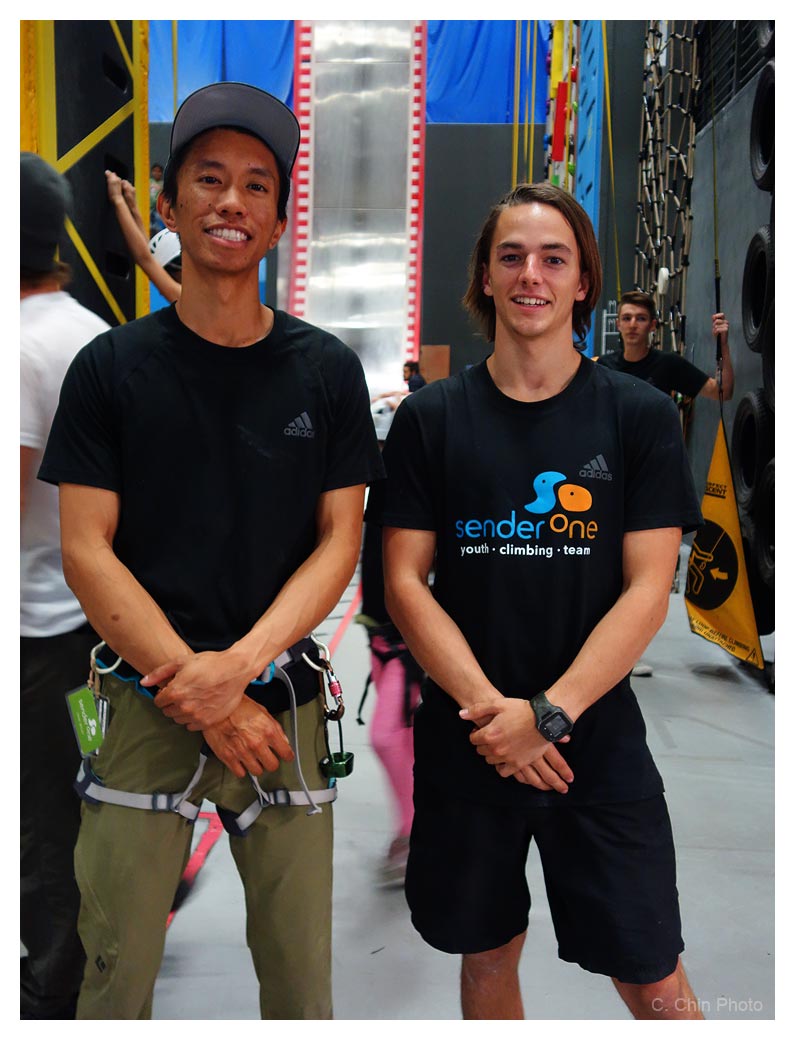

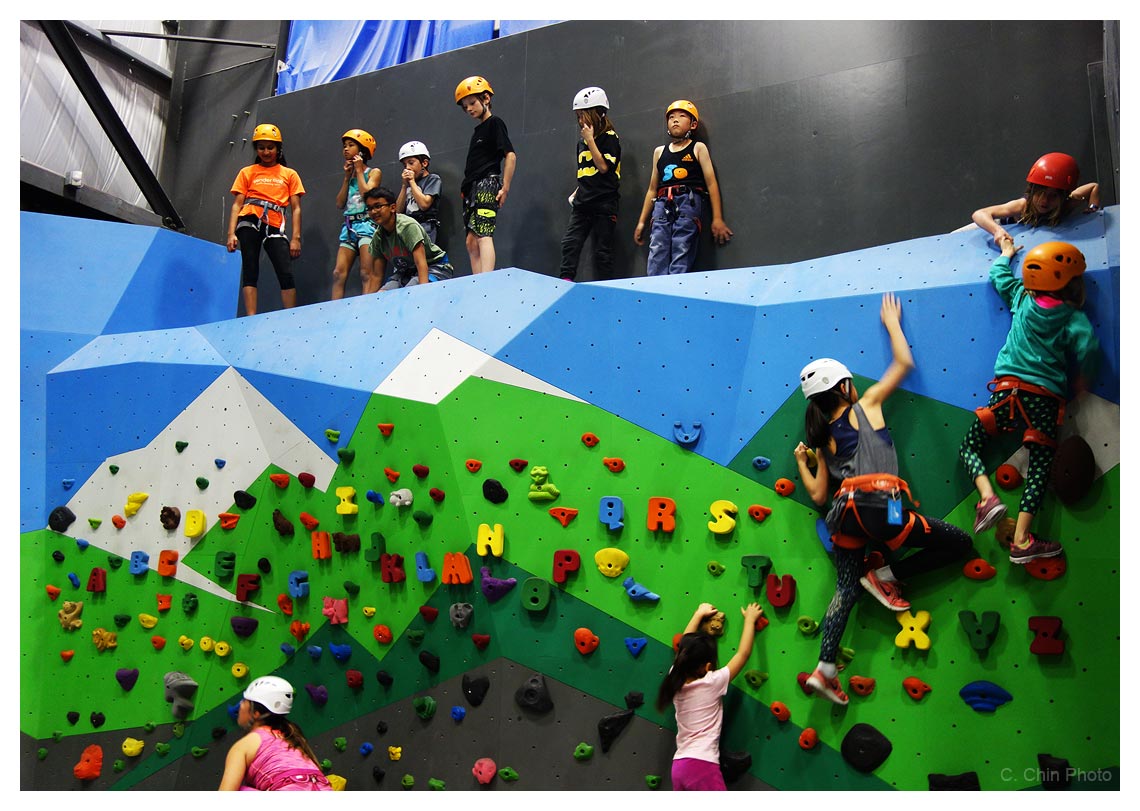
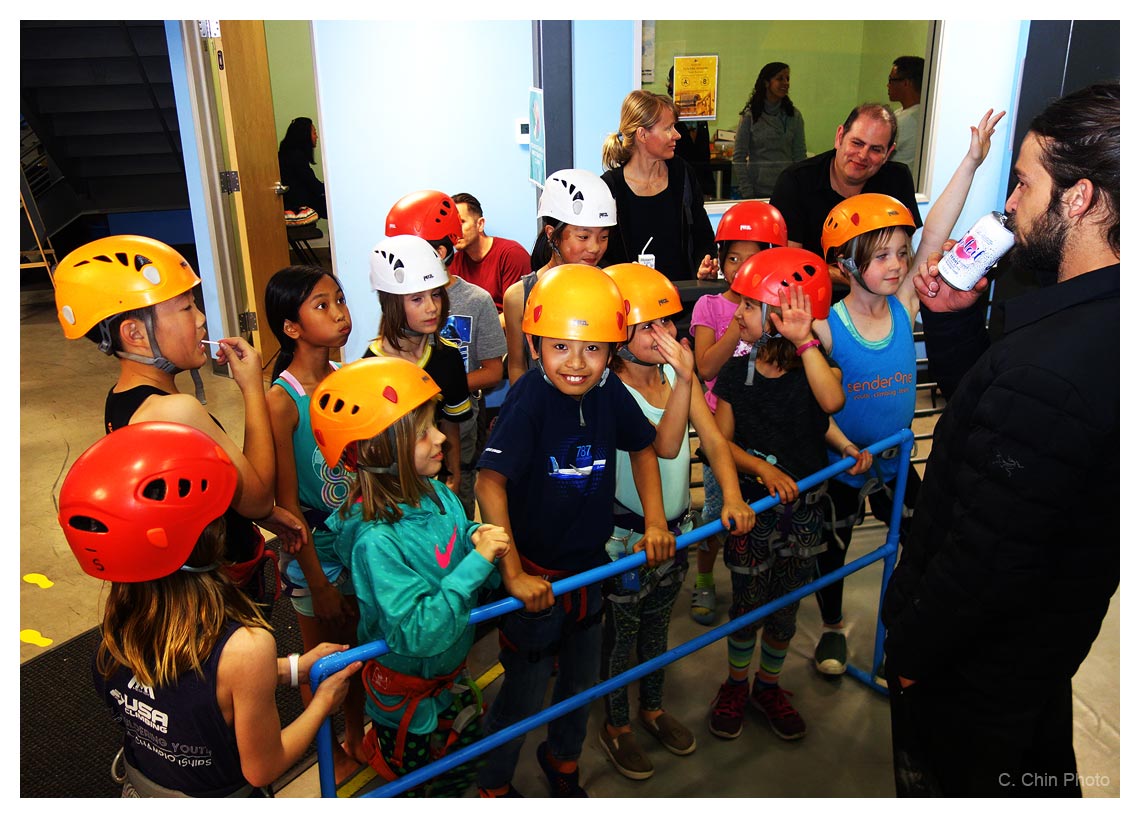


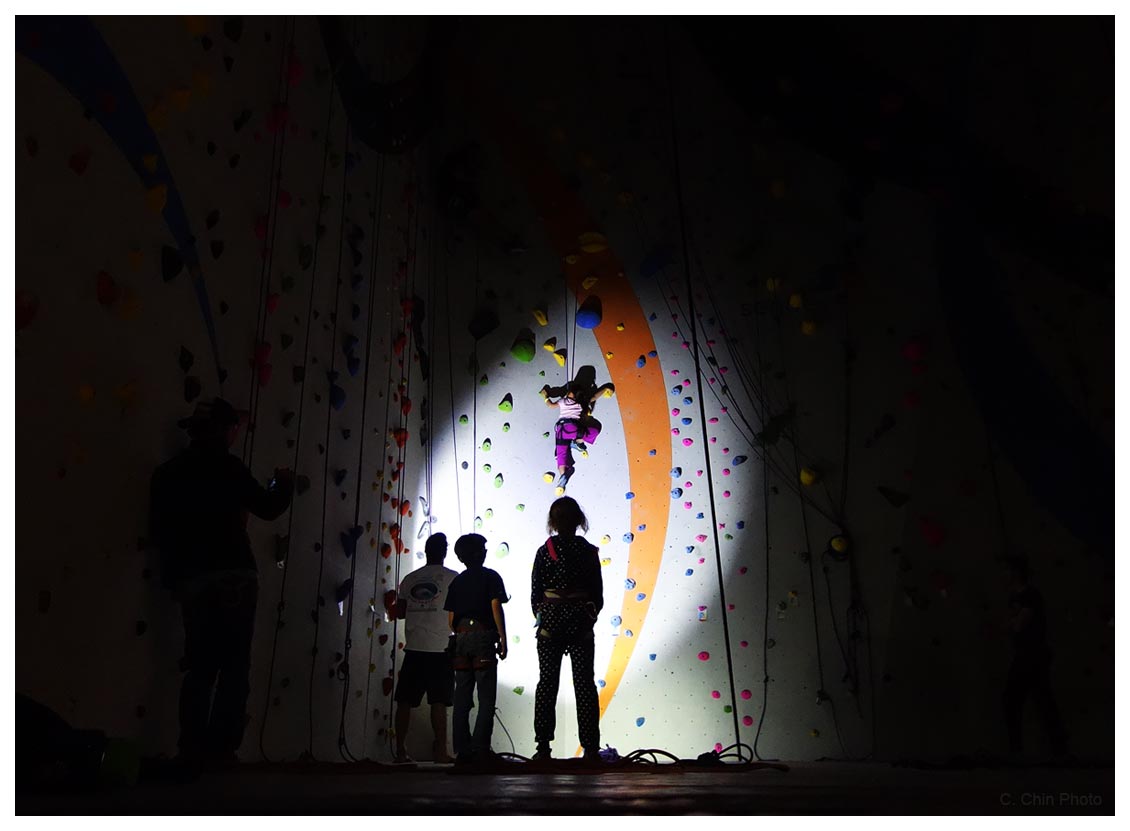
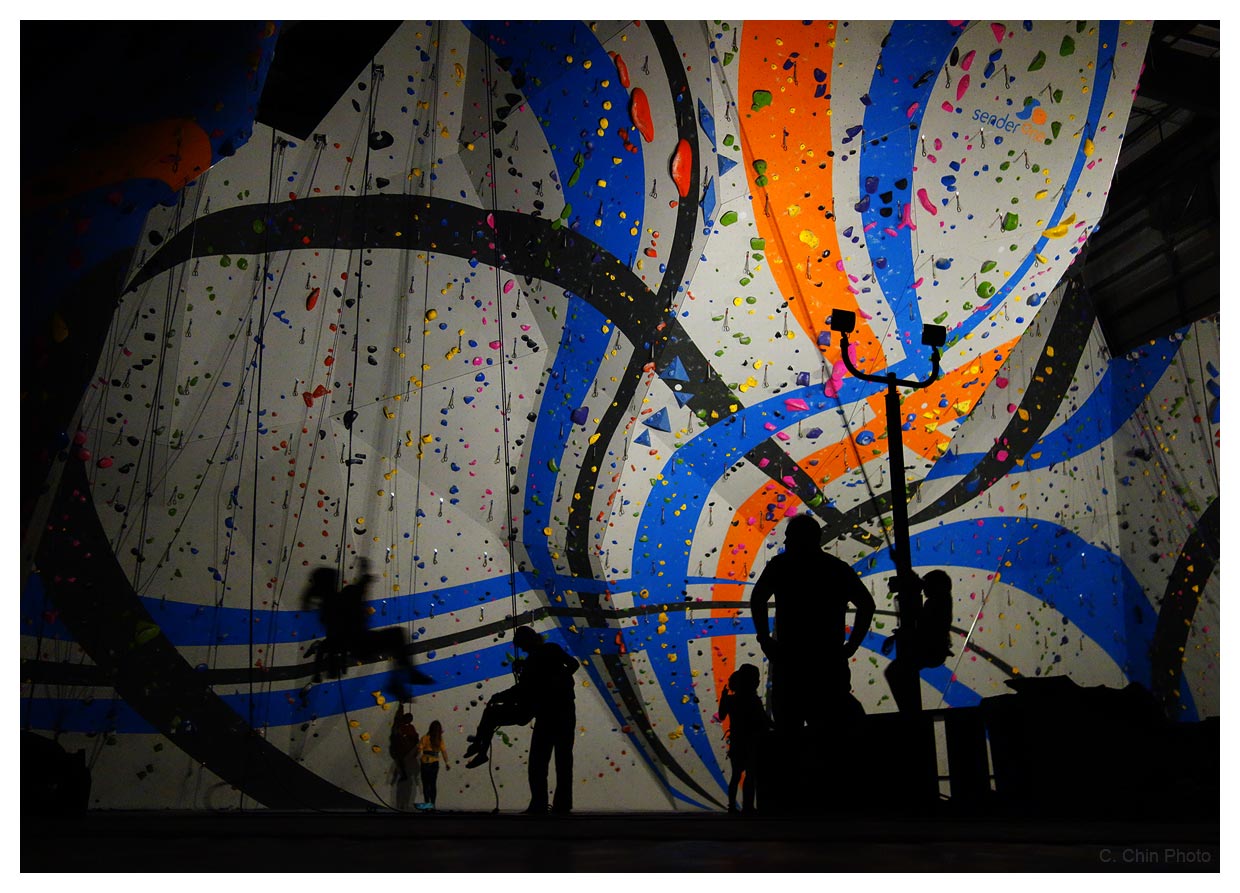
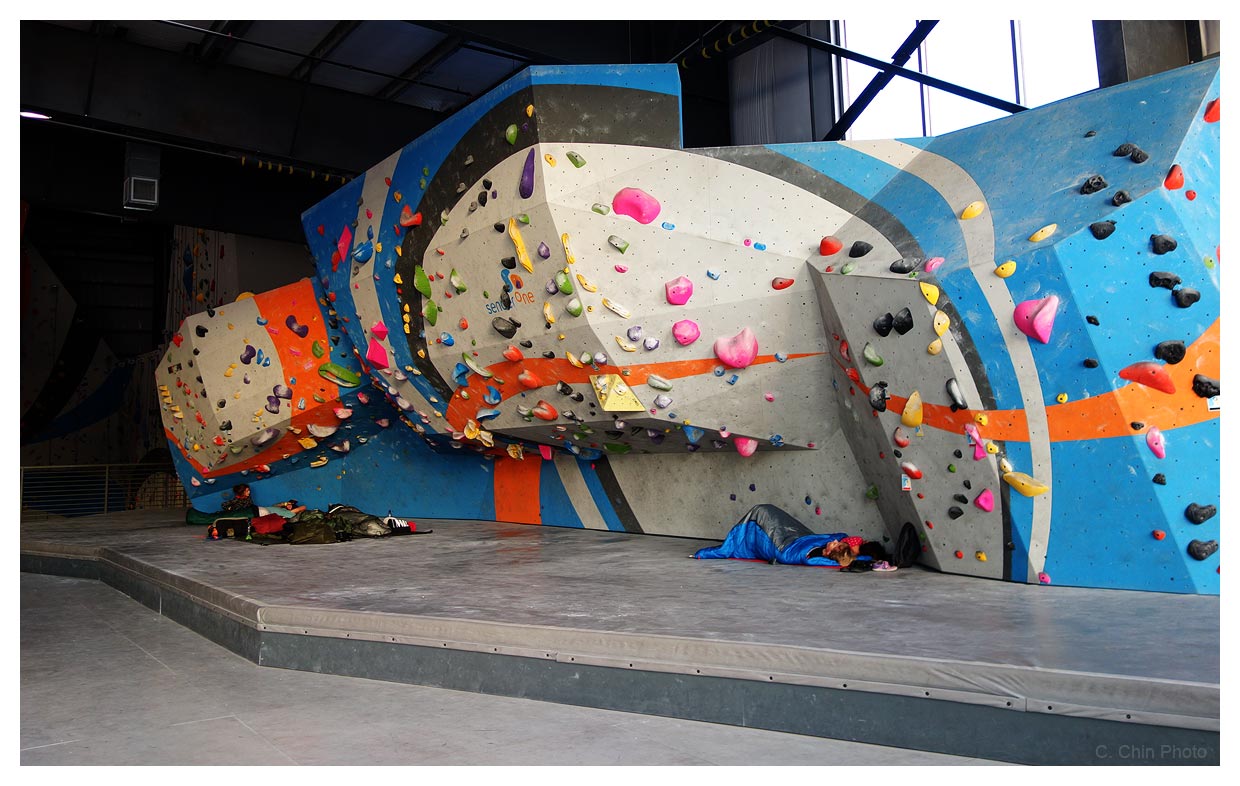










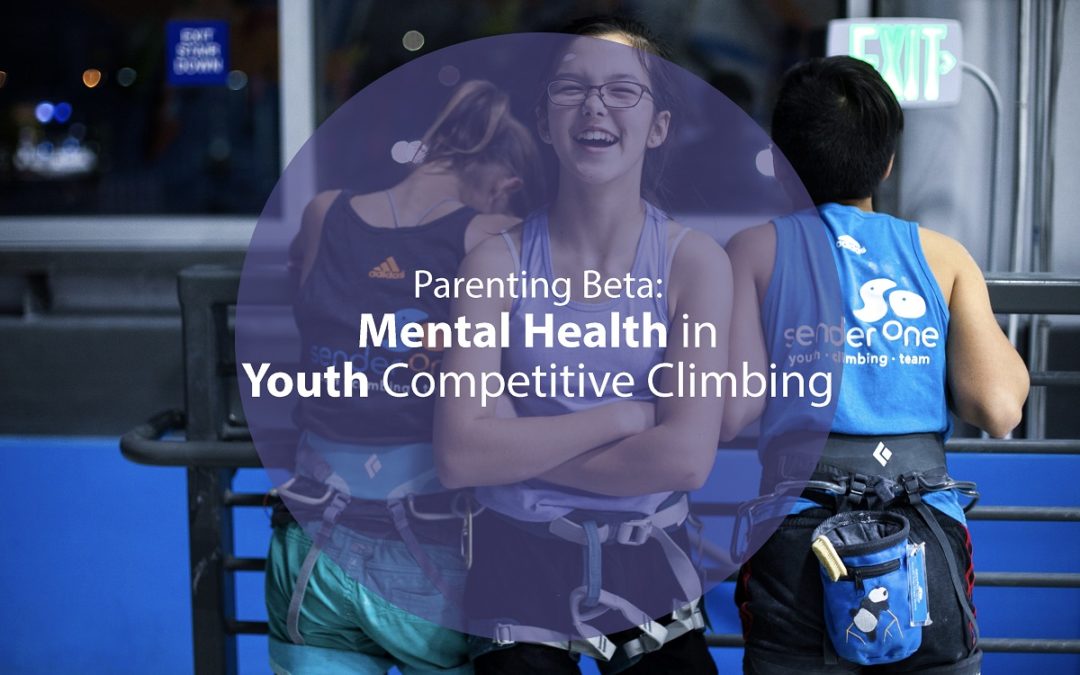
I want to address an often-ignored aspect in kids participating in competitive sports: young athletes' emotional and mental health. As with many sports, a major factor in climbing performance is the athlete’s mentality. Too much pressure, and the climber may crack. Too little, and the climber may lose focus and motivation.
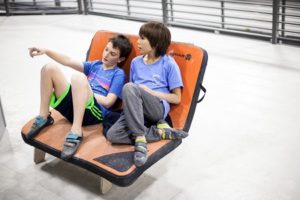
...youth athletes will get the sense that "comp day can be equal parts high-pressure excitement and simply a good time."
As a parent of a young climber, I struggle between encouraging my son, Jaden, to his potential versus pushing him too hard. Given that my husband and I also climb, we easily fall into the trap of fixating on grades.The sentence, "You have to start climbing V5 problems to be competitive" has actually come out of my mouth, when I could have identified specific skills in a difficult problem and encouraged Jaden to practice those skills. I want Jaden to "have fun and relax" at a competition, but alternatively, I want him to "take this seriously" so he will perform his best.
Udo Neumann wrote about training children who climb in his Art of Bouldering. Udo is the coach of the German Bouldering Team and shares training videos of the national team that includes Julie Wurm, Jan Jojer, and Monika Retschy. In a section on child development, Udo discouraged "grade-oriented climbing" because this puts children under pressure that can impact their overall well-being. For those parents and coaches who encourage children into climbing as a serious sport, Udo's approach is "a way that doesn't leave them either injured or disillusioned and out of sport for good at 13 or 14." Instead of fixating on immediate results, parents and coaches can focus on what actually matters: intention and consistency. Udo states that training is a long term commitment: "Ultimately, sustained success comes from training and performing well over the long term rather than winning in the short term."
Jordan Terry, Sender One LAX's youth competitive team head coach, teaches young climbers that falling and "feeling like a failure" are the most important parts of progressing. Young athletes may find it difficult to see that something that feels so negative is something positive. This process of mental growth takes a lot of time to for young kids, especially young motivated athletes, to cultivate. Jordan makes sure to tell youth competitive climbers about the times that she has fallen or failed, in climbing or in life. Jordan is honest about mistakes and ask for forgiveness when she missteps, and asks her youth athletes to do the same with their team. By asking others to be accepting of their "off" days, it becomes easier for young competitors to forgive themselves. This mindset then leads to more opportunities for success. Learning to accept falling off a project, saying "I can't", and being supportive for teammate creates an environment of trust for young competitors while also holding each other accountable to reaching climbing goals.
Climbing competitions are a challenging aspect of USA Climbing (USAC), because the pressure is high and there is temptation to compare oneself to others. Jordan cautions parents against entering into a competition space with any discussion of how their young athletes will do compared to other young climbers. Although Sender One youth athletes train as a team, climbing is an individual sport. It may be easier for parents and coaches to talk about "focusing on your personal climbing goals" than consistently creating a fun and constructive climbing environment. Jordan believes that as long as parents and coaches stay calm and maintains a casual and high-spirited energy, youth athletes will get the sense that "comp day can be equal parts high-pressure excitement and simply a good time."
Jordan's advice for parents of youth competitive climbers is to praise young athletes for a job well done or trying hard AND talking about how their young athletes felt when they weren't climbing their best. "Kids don't want to be told that they did great when they feel like they didn't, it doesn't feel genuine," says Jordan. Parents are more helpful by by working with young climbers to identify what specifically bothered their athletes about their climbing, put some thought into what could go better next time, and then move on with their day.
Injuries and accidents can lead to a plateau or recession in progress, both physically and mentally. Check out another blog post to help you overcome mental blocks on the wall. Especially in younger athletes, it is important to give them the push they need to discipline their training, but allow them the freedom and fun of the sport to truly maximize their potential.
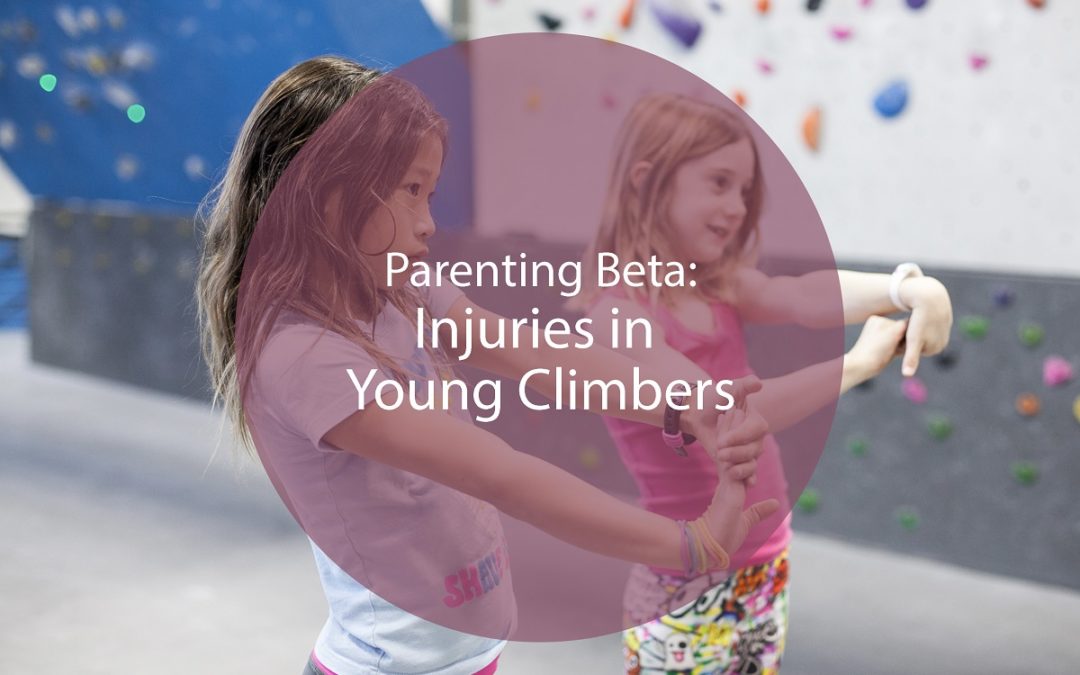
Words by Jane Chin, Ph.D. Photos by Cass Chin
I currently consult in the orthopedic field specializing on osteoarthritis, where I speak with sports medicine physicians and orthopedic surgeons about their management of patients with osteoarthritis (OA) pain. Historically, patients with OA pain have been elderly patients, as this degenerative disease is common with age. In recent years, the demographic has changed to include not only professional athletes, but "weekend warriors" -- active adults regularly engaged in sports. What troubled me was hearing physicians talk about "treating 20 year olds with knees that look more like 50 year old knees."
Physicians are increasingly treating younger children with sports injuries that were once common only in professional adult athletes. Children are specializing in a single sport at a younger age, which may confer a degree of competitive advantage, but exposes youth athletes to degenerative, repetitive-motion related injuries. Injuries can vary, but certain sports have a propensity for specific injuries.
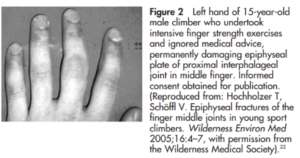 Those of us who climb know how hard climbing can be on our feet (climbing shoes!) and finger joints (crimps!).
Those of us who climb know how hard climbing can be on our feet (climbing shoes!) and finger joints (crimps!).
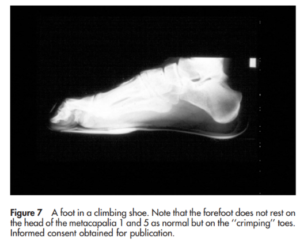
A 2007 literature review published in a sports medicine journal analyzed 50 scientific studies on common growth variables in young climbers (Morrison and Schoffl, Br J Sports Med 2007;41:852-861). Based on injury data and existing published scientific evidence, the researchers recommended that climbers younger than 16 should not undertake intensive finger strength training (campus board training, closed crimps), and should not participate in international bouldering competitions. Additionally, the researchers also found the following trends in young climbers:
- Ligament tears can be especially harmful to young children because their cartilage growth plates (epiphyseal plates) are 2-5 times weaker than the surrounding connective tissue. Emphasis should be climbing more (volume) with diverse routes to improve fluency and technique, instead increasing in climbing intensity (power).
- Growth spurts are associated with increased risk of injuries and growth plate fractures. Children who may have rapidly increased strength do not yet have the growth plates strong enough to withstand the amount of exertion.
- Wearing restrictive climbing shoes increases risk of foot injuries and deformities. Parents should keep regular records of street wear and climbing shoes size to monitor normal foot development in young climbers.
- Young climbers' body fat should be monitored, and referred for complete health evaluation, especially if height is in the lower 5th percentile or there is a downward trend of growth indices across 2 major percentile lines. For female youth climbers, menstrual age and cycle details should be monitored. In other words, deliberately becoming "underweight" as a means to improve competitiveness can be harmful to children's developing bodies.
The researchers concluded that an elite adult climber's training regimen is not appropriate for an elite young climber, even if they compete on identical routes. This makes sense: just as children are not "mini versions of adults", young climbers are not mini-versions of adult climbers.
Parents should also periodically check in with our youth climbers' pediatricians. Don't be afraid to ask our children's doctors questions and share concerns that they need to watch out for. Our pediatrician is not yet concerned about Jaden's growth plates because of his age, but cautioned that "If he starts getting frequent injuries, we need to pay attention." She confirmed that as children enter puberty, the growth spurts are correlated with increased injury risks.
Fortunately, Sender One’s Youth coaches are all conscientious of our young climber’s health and well-being. Their curriculum, especially for the competitive program, is tailored, monitored, and adjusted to each individual athlete. Age, experience, and current physical condition are all accounted when developing the climber’s training program. The Sender One coaches maximize climbing growth, and minimize stress and risks. For the adults who don't have professional rock climbing coach, check out this piece injury prevention!

Photography provided by Sara Griffith.
QUICK FACTS:
Sara Griffith, Senior in high school, 18
Years climbing: Somewhere around 11
Hardest Grade sent: v11/5.13a
--
How does it feel to be in Madison right now?
So cold!! I’m definitely spoiled by our Southern California “winters” and the temps are dropping below zero over here, so it’s a bit of a wake up call!
You're traveling for competitions smack dab in the middle of your school year. How do you balance your education with your climbing career?
Well, it can get stressful sometimes, but overall it’s pretty manageable to maintain a balance between my training and schoolwork. My teachers are pretty understanding when it comes to missing school for climbing trips and competitions, and plane rides are my best friend when it comes to getting work done when I’m out of town.
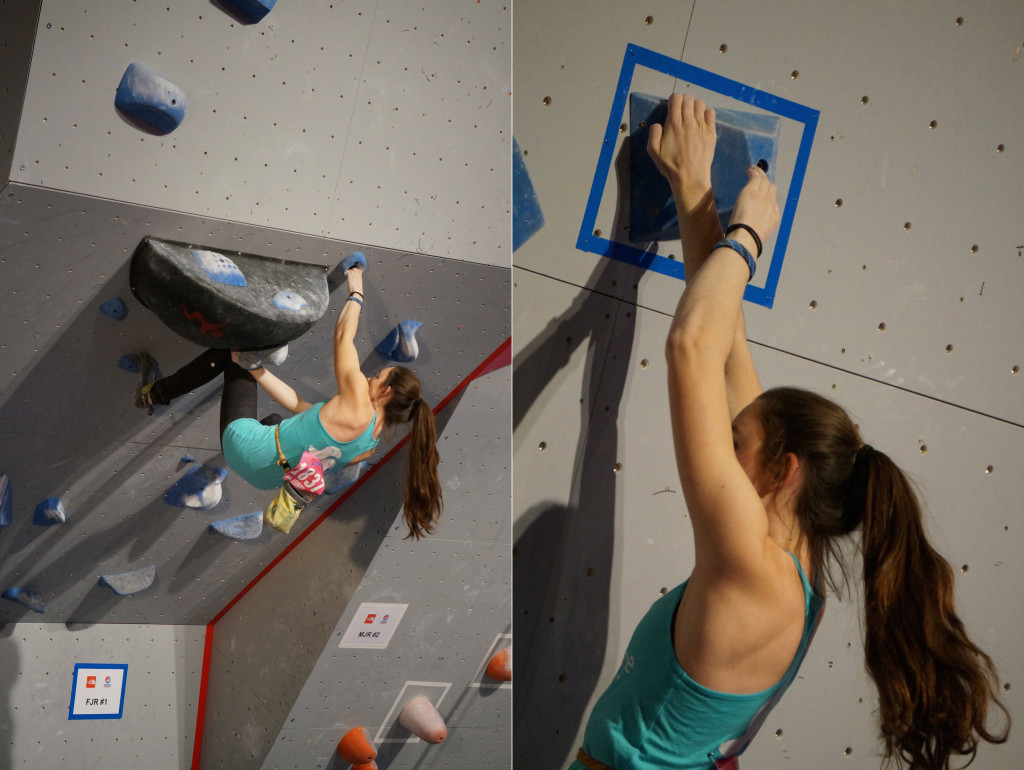 Sounds like you've been doing this for a while. Tell us about your climbing background!
Sounds like you've been doing this for a while. Tell us about your climbing background!
My dad took me into ClimbX in Huntington Beach one day when I was seven, and I liked it enough to join a weekly kids club to climb with other kids my age. A few months later my gym held a USAC local competition and i competed for fun, but the experience got me psyched to get involved in the USAC youth circuit and I’ve been training and competing ever since!
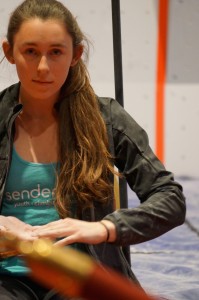 A lot of folks climb recreationally so they haven't been exposed to the competition circuit. Briefly explain how it works.
A lot of folks climb recreationally so they haven't been exposed to the competition circuit. Briefly explain how it works.
USA Climbing runs two seasons a year (bouldering and sport season), each with local competitions, regionals, divisionals, and nationals. Right now I’m competing at bouldering nationals after climbing well enough to earn a spot in each competition leading up to now. The youth circuit definitely helps me stay psyched to train and climb my strongest year-round at these competitions.
The whole atmosphere at the competition is awesome, where everyone is excited to be there, try hard, and leave it all on the wall. It’s super nice to catch up with climbers from around the country that I only get a chance to see a few times a year!
How have you been preparing for Nationals?
I’ve been training three to four days a week with a lot of weighted climbing, ab workouts, one-arm training, and cardio. Chad’s definitely been keeping me motivated!
Sara's climbing achievements are not limited to the indoors by any means. Most recently, Sara made a trip out to Bishop where she took down Soul Slinger (v9) among a slew of other classics in that grade range.
During a previous trip to Hueco Tanks, she managed to send Une Pointe de Bleau Dans un Hueco (v11) in just one session. One of her favorite climbs is Porkchop (v3) in Red Rocks which she says is "definitely one of my favorite boulder problems I've ever gotten on."
They say climbing is equal parts psychological and physical. What thoughts went through your mind leading up to it?
Going into the competition, every competitor in each category is super strong and it really depends on how well you warm up and how strong your mental game is that day. Just have to focus and make sure to give each attempt 100%.
Sara's hard work clearly paid off. She flashed all four Qualifier problems and is tied for 1st with Megan Mascarenas and Katy Lamb as she heads into semi-finals .
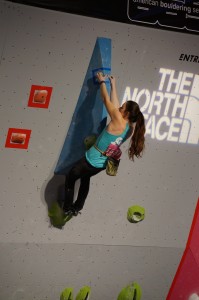
Qualifier - Problem 2
Break down some of the comp climbs/cruxes.
The climbs were super fun! Problem 2 had a fairly dynamic crux from a pretty chalked up sloper to some good knobs that I had to make sure to commit to 100% first go. Problem 4 was really mental for me! Balancey slab climbs are not my forte, and the main thought running through my mind during that climb was to stay calm and keep it together while going with the flow and figuring out the beta on the wall.
You had a ton of support from home with folks streaming the comp live and rooting you on via social media. How has that affected you during the comp?
It’s really encouraging tosee everyone from back home sending me their support!! It definitely adds a bit of extra motivation knowing they’re watching live.
You'll be aging out of the Youth Circuit after this season. What are your plans for your climbing career once you're in college?
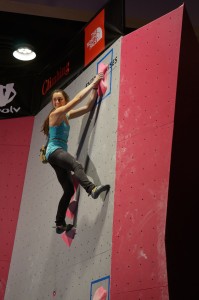
Topping out Problem 4
I’m definitely looking to compete in the Collegiate Climbing Series and the USAC Open competitions next year! I’m stoked on continuing to train and climb through college, wherever I end up!
Any last words?
I should climb around 6:40pm cheese time so4:40pm cali time tonight.
--
So there you have it. Tune in at 6:40 "cheese time" and send Sara some love while she dukes it out with the best athletes from around the nation! Watch live at www.lt11.tv